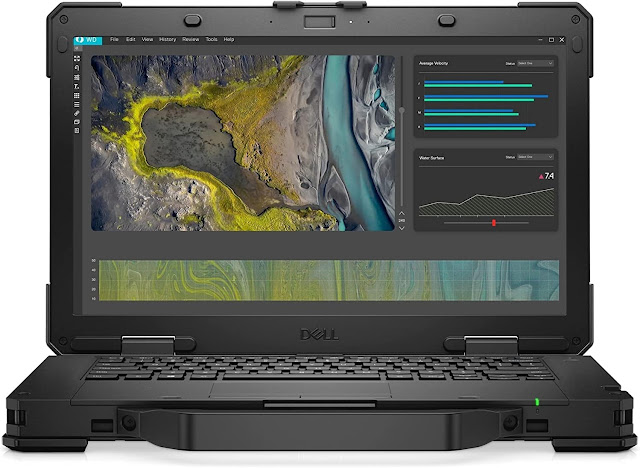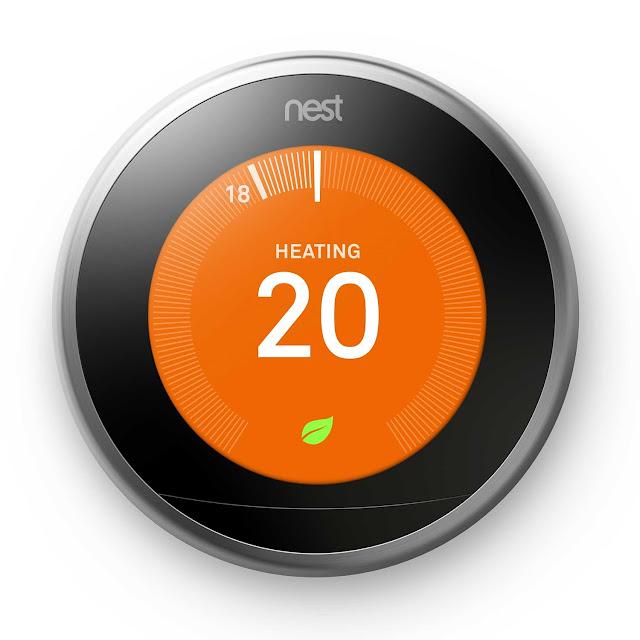Sustainable Tech Gadgets: How to Stay Green in a Digital World
In today’s digital era, technology is deeply embedded in our lives, but its environmental toll is undeniable. From energy-hungry manufacturing processes to the mountains of electronic waste (e-waste) filling landfills, the tech industry significantly contributes to global environmental problems. However, technology can also be part of the solution. As awareness of climate change grows, so does the demand for sustainable tech gadgets and devices designed to reduce energy consumption, extend product lifespans, and encourage recycling.
In this blog, we will explore the environmental impact of traditional technology, highlight top sustainable gadgets, and offer practical ways to reduce your carbon footprint in the digital world.
The Environmental Impact of Traditional Technology
To understand why sustainable technology is critical, we need to first recognise the environmental damage caused by conventional electronics. The Information and Communications Technology (ICT) sector accounted for 1.4% of global carbon emissions in 2019, comparable to the airline industry (European Commission, 2019) This figure encompasses emissions from device production, the operation of data centres, and the energy consumption of devices during their lifetimes.
Energy Consumption
Most electronic devices consume more energy than we realise. Household electronics such as laptops, smartphones, and TVs are responsible for approximately 15% of global residential energy consumption (International Energy Agency, 2020). Devices in standby mode also continuously drain power. Furthermore, the cloud infrastructure and data centres that store our digital content demand substantial electricity, contributing to increased carbon emissions unless powered by renewable energy.
The energy consumption of these devices isn't limited to their active use. A significant portion of emissions occurs during manufacturing. For instance, producing a typical laptop or smartphone requires significant resources, including energy-intensive mining of rare metals like cobalt and lithium.
Electronic Waste (E-waste)
Rapid technological advances have led to shorter product lifecycles, as consumers are often encouraged to upgrade regularly. In 2019 alone, 53.6 million metric tons of e-waste were generated globally, with only 17.4% properly recycled (Global E-waste Monitor, 2020). The rest often ends up in landfills or is exported to developing nations, where improper disposal leads to harmful environmental and health effects, due to the toxic materials found in many electronic components.
What Is Sustainable Technology?
Sustainable technology refers to the design and use of electronics with a minimal environmental footprint. This involves using eco-friendly materials, improving energy efficiency, and making devices easily repairable and recyclable. The goal is to reduce waste, conserve resources, and encourage longer product lifespans.
In addition, sustainable tech considers the ethical sourcing of materials. Many electronics contain rare metals like cobalt, lithium, and gold, which are often mined in environmentally damaging conditions, with exploitative labour practices in certain regions (Ali, 2019). Sustainable tech companies aim to prioritise responsibly sourced, conflict-free materials to minimise harm.
What Is Sustainable Technology?
Sustainable technology refers to electronics designed with minimal environmental impact. This encompasses several key principles:
- Use of eco-friendly materials: Recycled or renewable materials that reduce the reliance on virgin resources.
- Energy efficiency: Devices that consume less power during their lifecycle.
- Longer product lifespans: Gadgets that are modular or easily repairable to avoid premature disposal.
- Ethical sourcing: Ensuring that materials, such as rare metals, are mined under ethical conditions that avoid exploitation and environmental harm.
Sustainable tech products aim to address both the environmental damage caused by traditional devices and the ethical issues involved in their production, such as child labour in mining industries or unsafe working conditions in factories.
Top Sustainable Tech Gadgets
With consumer demand for eco-friendly products on the rise, several tech companies have begun developing more sustainable gadgets. Here are some of the top eco-conscious devices available today:
Fairphone
Fairphone is a leader in sustainable smartphone design. Its phones are modular, meaning users can easily replace or upgrade components, significantly extending the device's lifespan. Fairphone also prioritises ethical labour practices and uses conflict-free materials (Fairphone, 2023). It is an exemplary model of how smartphones can be both ethical and environmentally responsible.
Finally, it is eco-friendly because it is designed for easy repairs, uses recycled materials, and is committed to ethical sourcing. However, while Fairphone sets a high standard for sustainability, it is still a niche product. Its high cost and limited availability make it less accessible to mainstream consumers.
Solar-Powered Chargers
Solar-powered chargers offer a renewable energy solution for powering small devices such as smartphones and tablets. Companies like Anker and Goal Zero produce portable solar chargers that harness the power of the sun, making them ideal for reducing dependence on grid electricity Goal Zero, 2022. These chargers are especially useful for outdoor activities and help to lower your carbon footprint. It is eco-friendly because it generates clean energy from the sun, cutting down on electricity consumption.

While solar chargers are a great option for off-grid use, they are less efficient in areas with low sunlight or during certain seasons. Additionally, their charging speeds can be significantly slower than traditional plug-in options, which might deter users from adopting them for daily use. There is still a long way to go to make them use-friendly and adaptability.
Eco-Friendly Laptops
Some laptop manufacturers are actively working towards sustainability. Dell, for instance, uses recycled carbon fibre in its Latitude 5000 series, reducing the use of virgin materials Dell Technologies, 2023. Similarly, Apple’s MacBook line is made from recycled aluminium, part of the company’s broader commitment to achieving carbon neutrality by 2030 (Apple, 2022). Both companies are setting new standards for sustainable computing.
Energy-Efficient Smart Home Devices
Smart home devices like Google Nest thermostats and Philips Hue smart bulbs can drastically cut down household energy consumption. Smart thermostats, for example, learn user preferences and automatically adjust heating and cooling for maximum efficiency Google Nest, 2023. Meanwhile, LED smart bulbs use much less energy than traditional incandescent lights and can be controlled remotely, preventing unnecessary energy use.
 |
Bamboo Keyboards and Mice
Bamboo is a highly sustainable material that requires fewer resources to grow compared to conventional plastics or metals. Companies such as Impecca and iZen manufacture wireless keyboards and mice made from bamboo, providing eco-friendly alternatives to plastic accessories (Impecca, 2023). These stylish, renewable products help reduce plastic waste while offering the same functionality as their plastic counterparts.
It is eco-friendly because it is made from renewable bamboo, a fast-growing and biodegradable material, reducing reliance on plastics.
How to Stay Green with Your Tech
In addition to choosing sustainable tech gadgets, there are several steps you can take to minimise the environmental impact of your technology usage:
Buy Fewer, Longer-Lasting Devices
One of the simplest ways to reduce e-waste is by extending the lifespan of your devices. Rather than upgrading every year or two, consider keeping your gadgets longer. Modular products like Fairphone are specifically designed to last, allowing users to replace parts and make repairs instead of purchasing new devices (Fairphone, 2023).
Use Energy-Efficient Settings
Most modern devices come with energy-saving features. Enabling "low power mode" on your phone or setting your computer to sleep mode after periods of inactivity can significantly reduce energy use. Additionally, unplugging devices when fully charged prevents "phantom power" consumption, where energy is drawn even when a device isn’t actively being used.
Support Ethical and Sustainable Companies
When purchasing new electronics, research the company’s sustainability practices. Many brands, such as Apple, Dell, and HP, have committed to reducing their environmental impact through the use of recycled materials, renewable energy, and more ethical manufacturing practices. By supporting these companies, you help drive demand for more sustainable business models.
Recycle Old Electronics Responsibly
Proper disposal of old devices is critical to reducing e-waste. Many local governments and retailers offer e-waste recycling programs. Some companies, like Apple and Best Buy, even provide take-back services for old electronics, ensuring that valuable components are recycled and hazardous materials are safely handled Basel Action Network, 2022.
Opt for Cloud Services Powered by Renewable Energy
Data centres, which power cloud storage and digital services, consume enormous amounts of electricity. However, many tech giants like Google, Microsoft, and Amazon Web Services (AWS) have made significant investments in renewable energy to power their data centres Google Cloud, 2022. When choosing cloud providers, consider selecting those committed to sustainability.
Conclusion
As technology continues to evolve, so too must our approach to reducing its environmental impact. Sustainable tech gadgets offer a promising solution, blending functionality with eco-conscious design. By choosing energy-efficient devices, supporting sustainable companies, and practising responsible tech habits, consumers can help reduce their carbon footprints while staying connected.
The intersection of technology and sustainability is no longer just a niche concern—it’s a growing necessity. Small, conscious choices like opting for modular smartphones, using solar-powered chargers, and recycling old gadgets can make a big difference in protecting the environment. Together, we can pave the way for a greener, more sustainable digital future.









Comments
Post a Comment